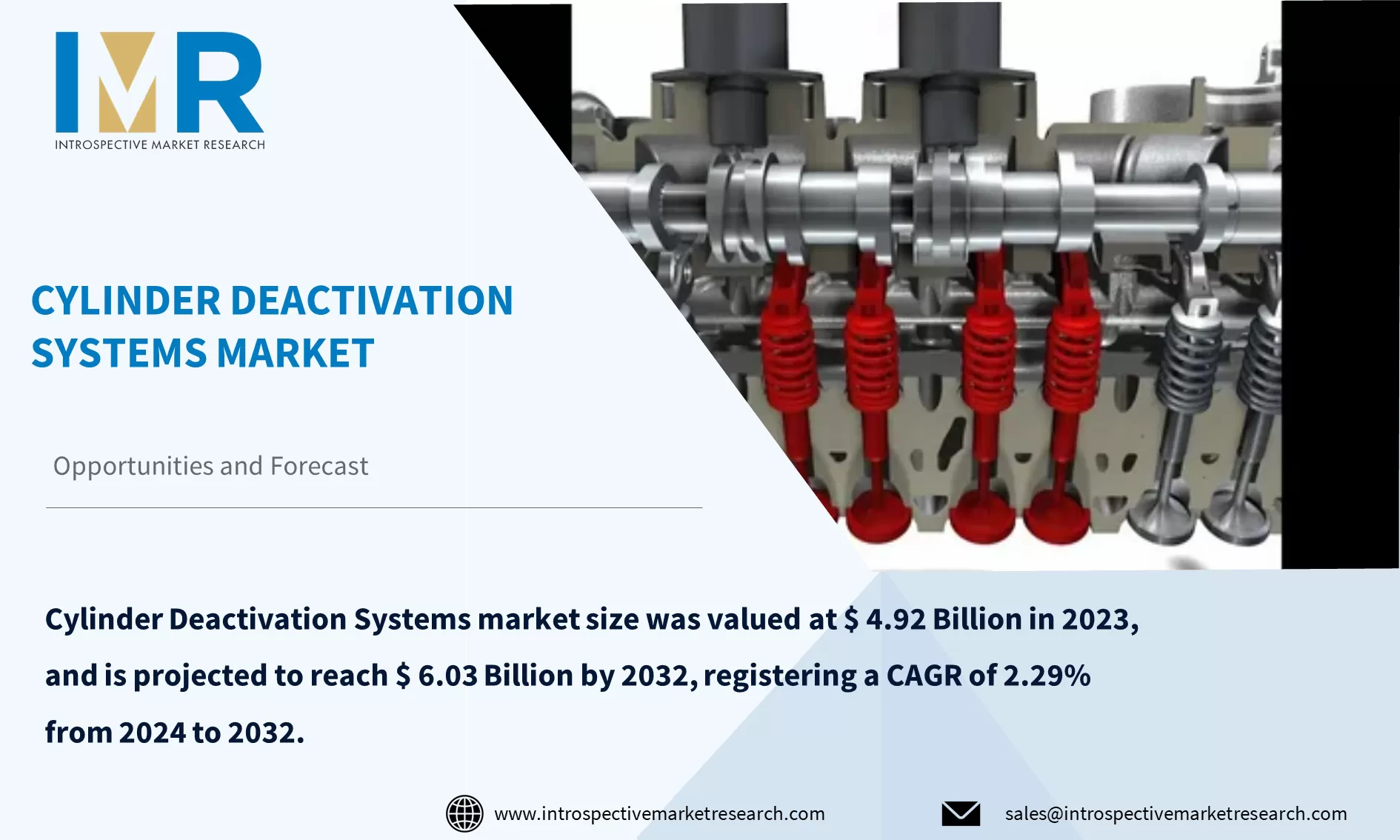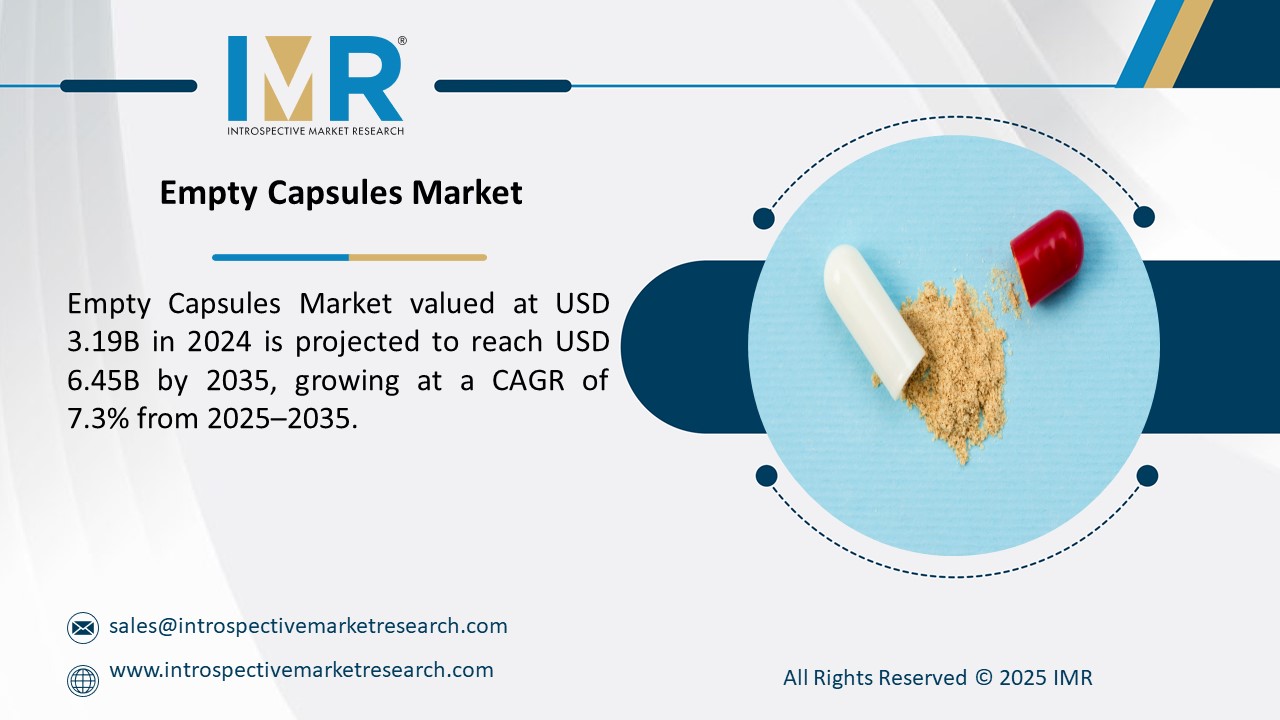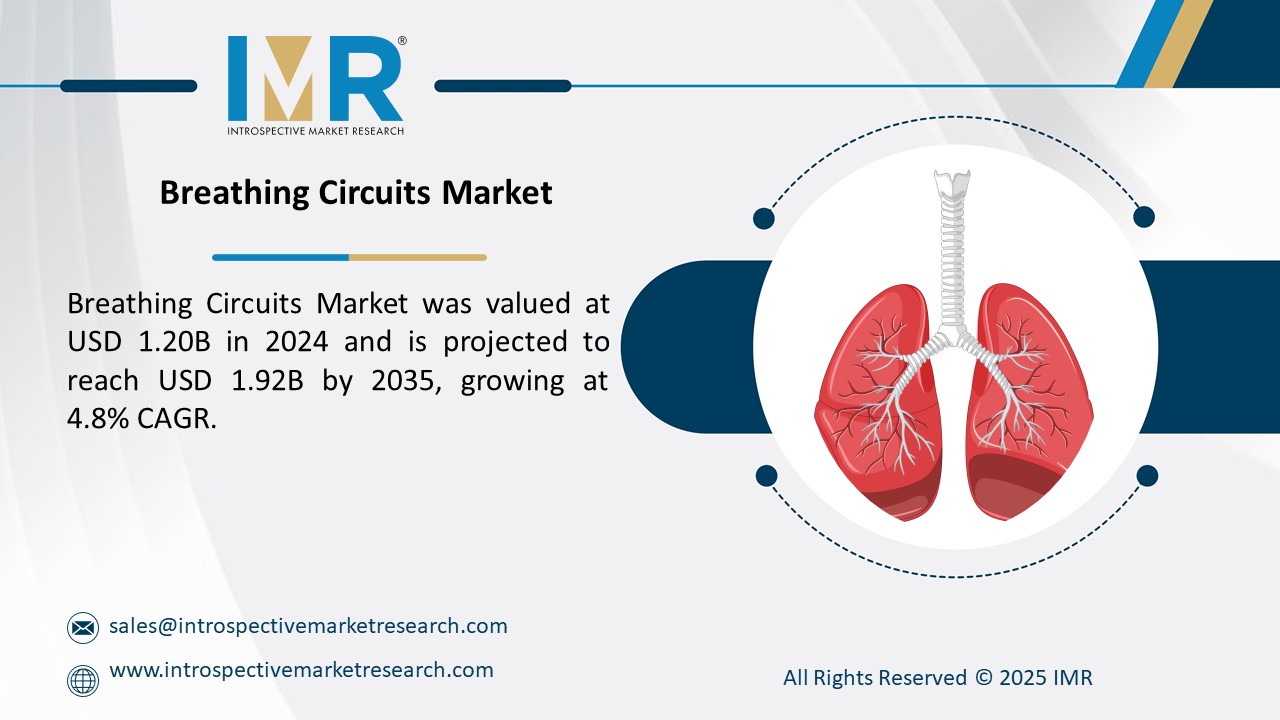
Cylinder Deactivation Systems Market
According to a new report published by Introspective Market Research, titled, ?Cylinder Deactivation Systems Market by Component, Valve Actuation Method, Fuel Type, and Vehicle Type: Global Opportunity Analysis and Industry Forecast, 2024?2032,?
the global Cylinder Deactivation Systems market size was valued at $ 4.92 Billion in 2023, and is projected to reach $ 6.03 Billion by 2032, registering a CAGR of 2.29% from 2024 to 2032.
Cylinder deactivation systemsalso referred to as variable displacement or active fuel management systems, represent a cutting-edge innovation in internal combustion engines aimed at bolstering fuel efficiency and curbing emissions. These systems enable engines to selectively deactivate specific cylinders under light-load conditions, effectively transforming a larger engine into a more economical, smaller one. The advantages of cylinder deactivation systems are substantial. Foremost among these is the enhancement of fuel efficiency. By operating with fewer active cylinders during steady-state driving, the engine expends less energy, resulting in notable reductions in fuel consumption. Furthermore, this technology contributes to a decrease in harmful emissions as fewer active cylinders lead to diminished fuel combustion and subsequently, lower exhaust emissions. This aids in meeting stringent environmental regulations and reducing the overall carbon footprint of vehicles equipped with such technology.
Cylinder deactivation systems have become a prominent fixture in the automotive industry due to their capacity to improve fuel efficiency. These systems temporarily deactivate specific cylinders in internal combustion engines under light-load conditions, thereby reducing fuel consumption. The market for cylinder deactivation systems is steadily expanding owing to stringent emissions regulations and increasing consumer demand for more fuel-efficient vehicles. The continuous need to observe strict fuel efficiency and pollution standards enforced by governments worldwide is propelling the demand for cylinder deactivation systems. Automakers are under immense pressure to adhere to these regulations, and cylinder deactivation technology offers a viable solution. By integrating cylinder deactivation systems into their vehicles, manufacturers can significantly diminish carbon dioxide emissions and bolster fuel efficiency, meeting or surpassing legal requirements.
Furthermore, rising fuel prices have heightened consumer interest in vehicles offering better mileage. As the cost of fuel remains a significant concern for consumers, there is a pronounced inclination towards purchasing vehicles equipped with advanced fuel-saving technologies like cylinder deactivation systems. Automakers are actively investing in research and development to further refine the efficiency and effectiveness of cylinder deactivation systems. This ongoing innovation is anticipated to yield more advanced and sophisticated solutions, rendering them even more attractive to consumers.
Advanced materials and manufacturing techniques have played a pivotal role in revolutionizing various industries, including the development of cylinder deactivation systems. By selectively deactivating specific cylinders under light load conditions, these systems enable engines to operate more efficiently, resulting in significant fuel savings. The integration of advanced materials, such as high-strength alloys and lightweight composites, in the manufacturing process of cylinder deactivation systems components has enhanced their effectiveness while making them more cost-effective to produce. Mass production of components utilizing these techniques has substantially lowered production costs, making this technology more accessible across different market segments.
Global Cylinder Deactivation Systems Market, Segmentation
The Cylinder Deactivation Systems market is segmented based on Component, Valve Actuation Method, Fuel Type, Vehicle Type, and region.
Component:
The Engine Control Unit (ECU) plays a pivotal role in the evolution of Cylinder Deactivation Systems (CDS), which aim to enhance fuel efficiency in internal combustion engines by selectively shutting down cylinders when their output is unnecessary. Thanks to advancements in microprocessor technology, ECUs have become more robust and efficient. These modern ECUs can handle large volumes of data in real time, allowing for precise monitoring of engine parameters. This increased computational power enables seamless management of cylinder deactivation, ensuring smooth transitions between active and inactive states.
Fuel Type:
Gasoline Cylinder Deactivation Systems, alternatively referred to as Variable Displacement Technology, have become increasingly favored for their capacity to bolster fuel efficiency in internal combustion engines. This mechanism intermittently disables a specific set of cylinders during light load scenarios, thereby diminishing the engine's displacement and augmenting its efficiency. Rigorous emissions standards worldwide have driven automakers to explore inventive approaches to comply with environmental regulations. Cylinder deactivation serves to curtail emissions by fine-tuning the engine's operation per demand, thereby mitigating the release of detrimental pollutants into the air.
Region:
The Asia Pacific region is poised to dominate the Cylinder Deactivation Systems market due to various factors. The surge in vehicle ownership in countries like China, India, Japan, and South Korea, driven by rising incomes and urbanization, is boosting demand. Additionally, stringent government regulations aimed at enhancing fuel efficiency and reducing emissions are pushing automakers to adopt innovative technologies. The region's strong presence of major automakers and a robust automotive supply chain further facilitate the development and integration of advanced technologies like cylinder deactivation systems, making them a focal point for investment and competition.
Some of The Leading/Active Market Players Are-
- GM(US)
- Chrysler Group (US)
- Jacobs (US)
- Boston (US)
- BorgWarner (US)
- Garmin ltd (US)
- BorgWarner Inc. (US)
- Robert Bosch (Germany)
- Continental AG (Germany)
- Volkswagen (Germany)
- Bosch (Germany)
- Mercedes-Benz (Germany)
- Schaeffler (Germany)
- FEV (Germany), and Other Active Players
Key Industry Developments
- In February 2023, Intelligent power management company Eaton announced its Vehicle Group cylinder deactivation (CDA) and late intake valve closing (LIVC) have been proven to simultaneously reduce nitrogen oxides (NOx) and carbon dioxide (CO2). The technologies were shown to be effective for meeting future global emissions requirements for diesel-engine-powered commercial vehicles, according to a recent series of tests conducted by FEV, a recognized leader in the design and development of advanced gasoline, diesel, and hybrid powertrains and vehicle systems.
- In December 2022, DENSO announced its sustainability management strategy that contributes to a sustainable society, its corporate value improvement strategy to strengthen the corporate foundation that supports the creation of values.
Key Findings of the Study
- Cylinder deactivation systems are pivotal for enhancing fuel efficiency and reducing emissions in internal combustion engines, meeting stringent environmental regulations and consumer demand for more fuel-efficient vehicles.
- Advanced materials and manufacturing techniques have revolutionized cylinder deactivation systems, making them more effective, cost-efficient, and accessible across various market segments.
- The Asia Pacific region is set to dominate the market due to increasing vehicle ownership, stringent government regulations, and the presence of major automakers driving innovation and adoption of cylinder deactivation technology.





